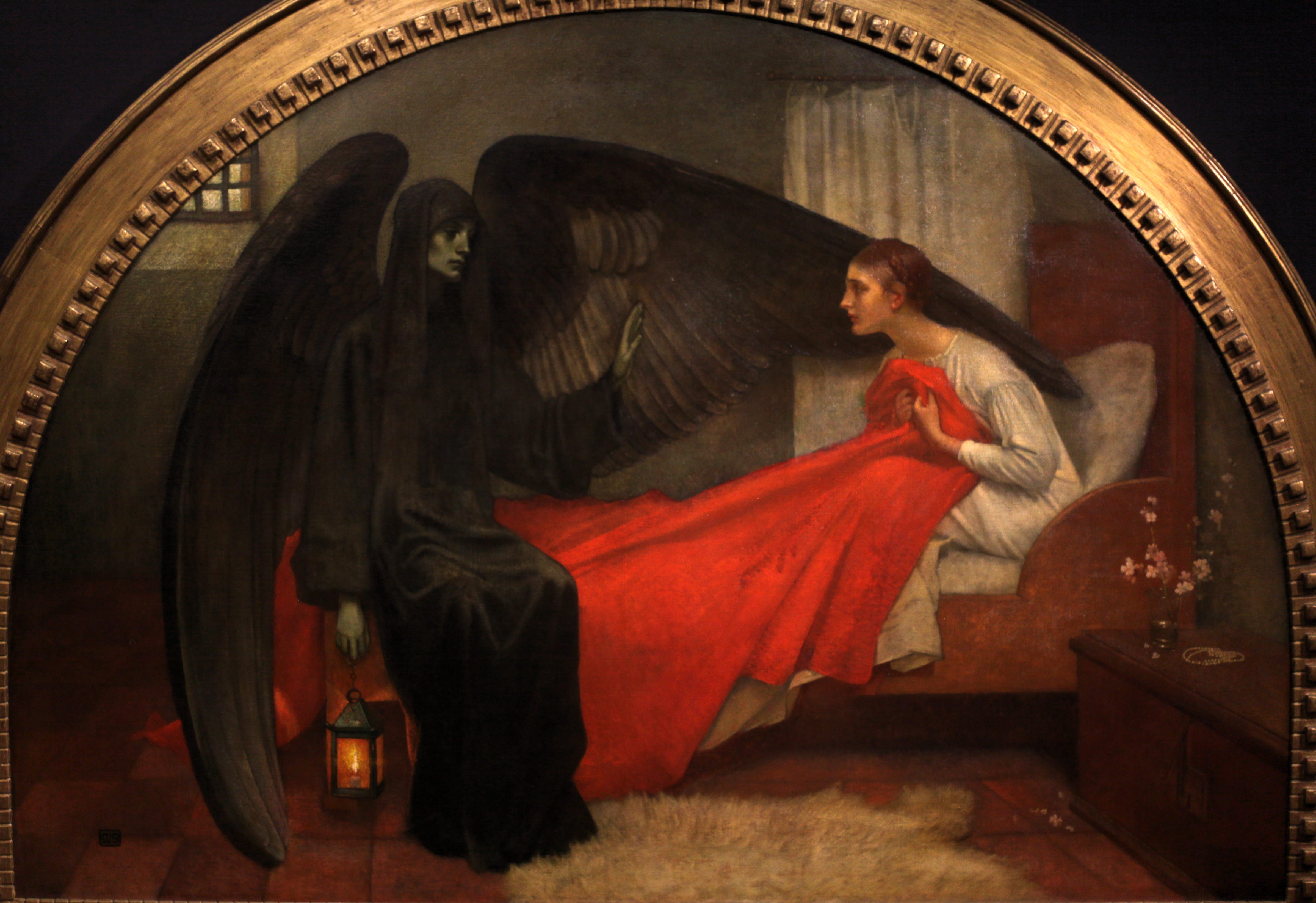From the earliest cave paintings to contemporary digital art, humans have always been captivated by the concept of death and the afterlife. One of the most prominent figures in this context is the Angel of Death, a symbol of the ultimate transition and the boundary between life and the afterlife. This article will trace the portrayal of the Angel of Death in artwork throughout history, exploring how different cultures, time periods, and artistic movements have shaped this complex figure.
(The Angel of Death, circa 1851. Painted by Émile Jean-Horace Vernet) - Buy Print
Ancient Depictions:
The depiction of death-dealing deities or spirits dates back to the earliest known civilizations. In Ancient Egypt, Anubis, the god of mummification and the afterlife, was often portrayed in art as a jackal or a man with a jackal's head. Similarly, in ancient Greek art, Thanatos, the personification of death, was depicted as a winged youth, often accompanying the souls of the departed.
Medieval Art:
During the Middle Ages, the image of the Angel of Death began to crystallize in its more familiar form. The figure was often depicted as a skeletal figure or a grim reaper, carrying a scythe and an hourglass, symbols of the inevitability and the fleeting nature of life. This image was prevalent in "memento mori" and "danse macabre" artworks, which served as reminders of the mortality of man regardless of his station in life.

(Angel of Death Kills First Born, circa 1865. Painted by Ilya Repin (1844–1930)
Renaissance and Baroque Eras:
In the Renaissance and Baroque periods, the Angel of Death was depicted in a more nuanced and diverse manner. Artists like Albrecht Dürer and Rembrandt portrayed the Angel of Death as a majestic, awe-inspiring figure rather than a terrifying specter. Death was often shown in these works as a natural part of life, to be met with dignity and acceptance.
Romanticism and Symbolism:
In the Romantic and Symbolist periods, artists began to explore the emotional and psychological aspects of death. Figures like Gustave Moreau and Odilon Redon depicted the Angel of Death as a beautiful, melancholic figure, often shrouded in mystery and symbolism. These artists sought to convey the deep sadness, fear, and fascination associated with death.
(Angel of Death, circa 1881. Painted by Evelyn De Morgan) - Buy Print
Modern and Contemporary Art:
Modern and contemporary artists have continued to explore and reinterpret the figure of the Angel of Death. Some, like Salvador Dalí and Frida Kahlo, have incorporated personal and cultural symbols into their depictions of death. Others, like Damien Hirst and Kiki Smith, have used the Angel of Death to provoke discussion about societal attitudes towards death and mortality.
The Angel of Death is a powerful symbol that has been reimagined and reinvented by artists throughout history. From the grim specter of the Middle Ages to the more nuanced depictions of modern and contemporary art, this figure continues to challenge, provoke, and inspire. As we continue to grapple with our own mortality and the mysteries of life and death, the Angel of Death will undoubtedly continue to hold a prominent place in our artistic explorations.


